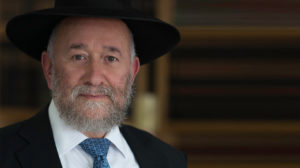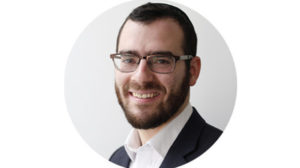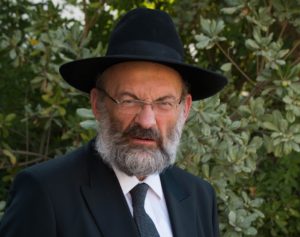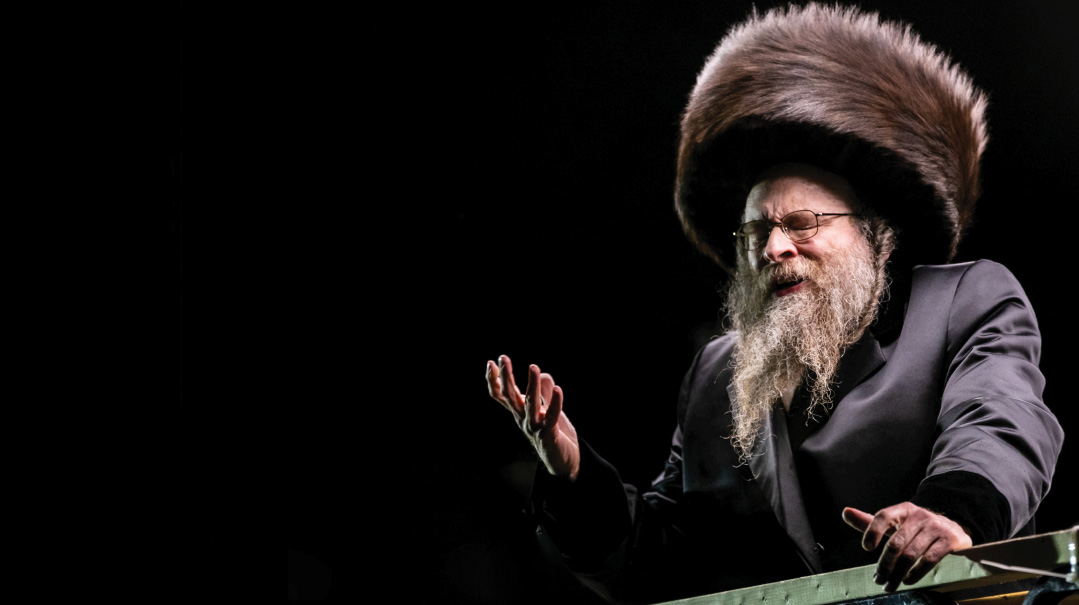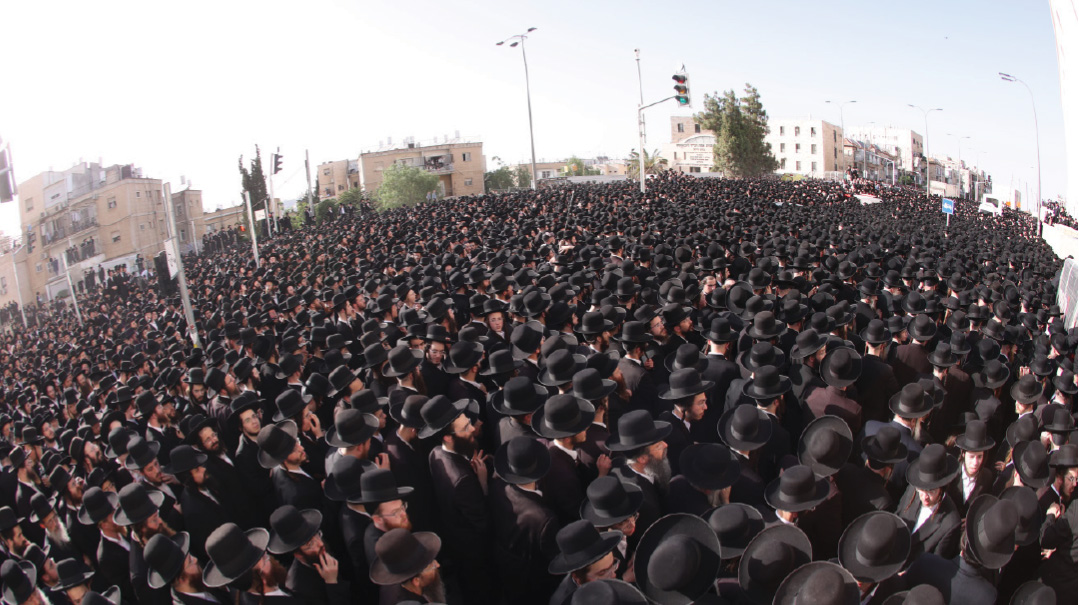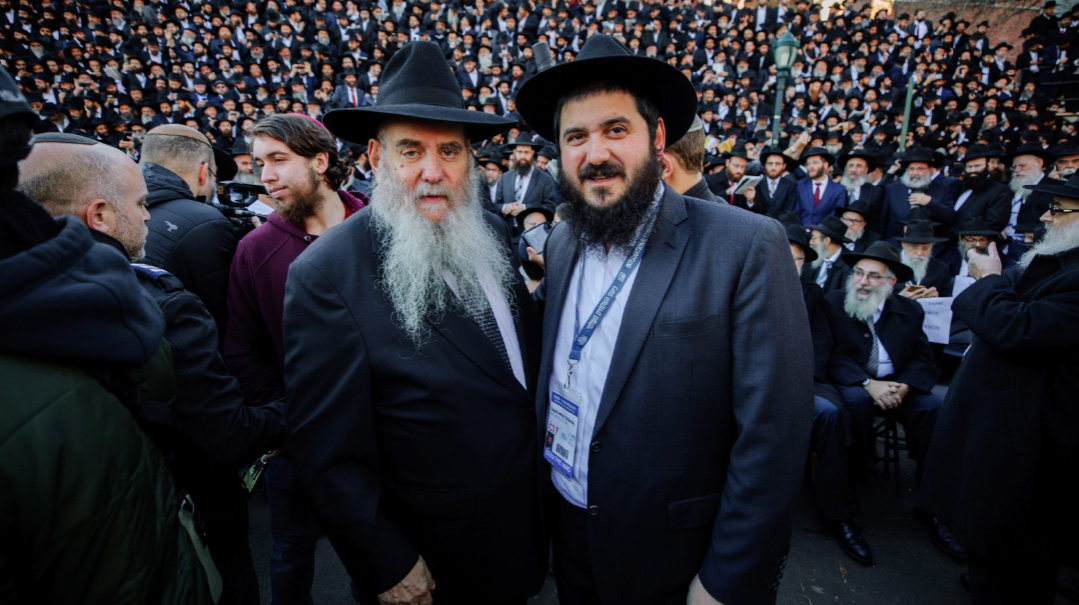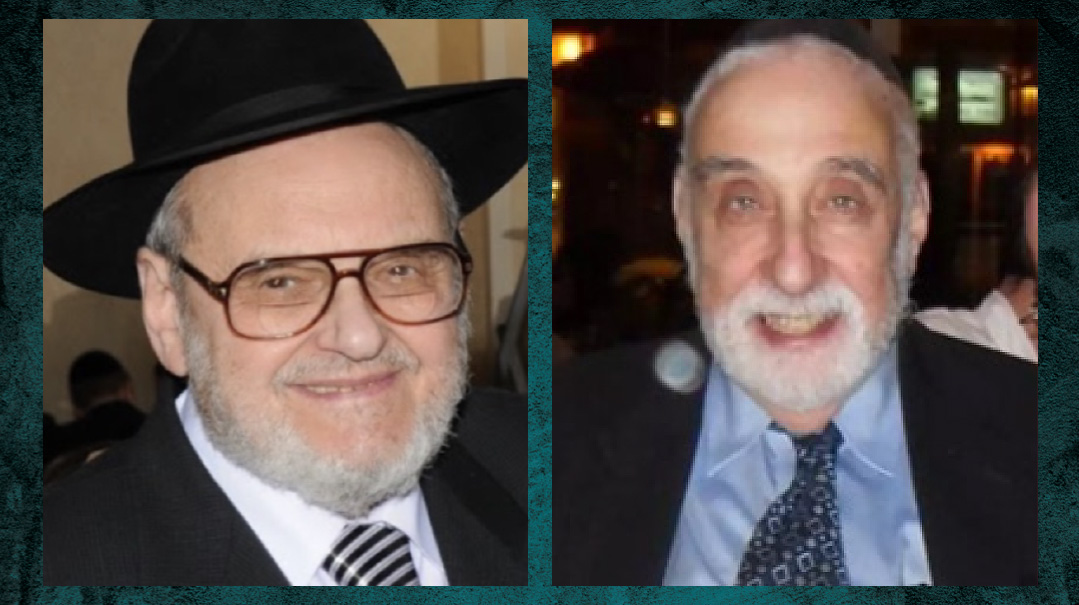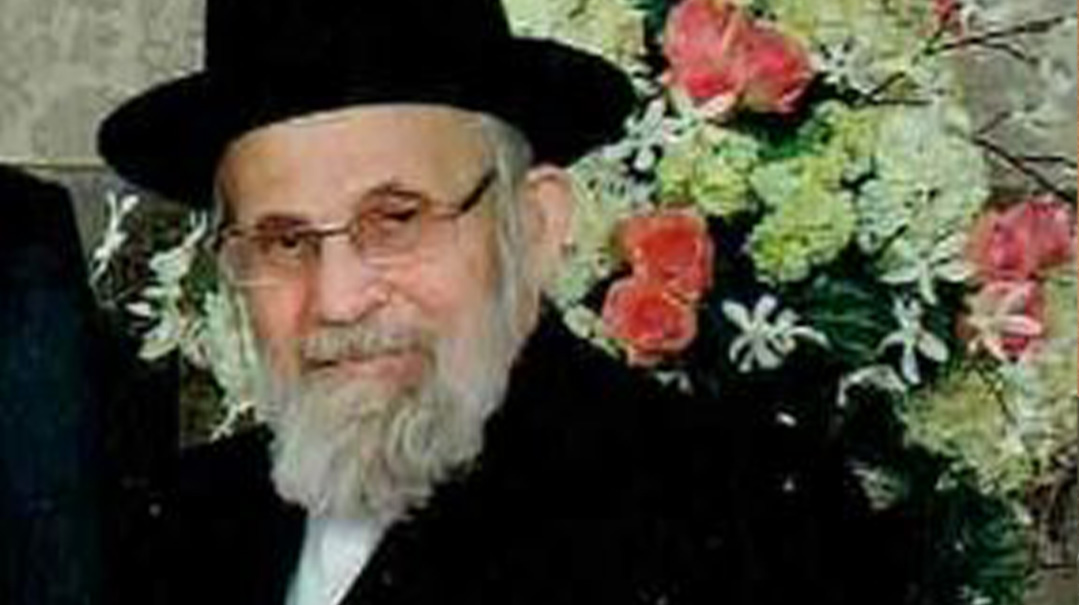The Transformer
| May 29, 2019With fortitude and resolve, Rabbi Akiva Stefansky revolutionized Toronto

A new student arrived in the fledgling high school. As the menahel welcomed her, he noticed that her skirt didn’t meet the school’s tzniyus standards. Smiling warmly, he said to her, “When the Yidden were in the Midbar, Hashem made a special neis that their clothing grew as they grew. Unfortunately, we’re not zocheh to those nissim nowadays.” The girl returned his smile, appreciated the sensitive way he conveyed the message, and it was never an issue again.
Rabbi Akiva Stefansky was that new menahel, hired to lead this novice high school in Toronto of 1965. Over the short history of Toronto’s Yiddishkeit, outstanding talmidei chachamim had served in the city’s rabbanus — Rav Yaakov Kamenetsky was one of them — bit still, something was missing. Many people were lax in their observance, and limud haTorah among the masses was practically nonexistent. Rabbi Stefansky was determined to up the level of Torah in the city, and his first step was to set a new standard of frumkeit for high school girls.
He encouraged his students to seek spouses who were bnei Torah and who would start their married lives in kollel, and five years later, he was the man behind convincing well-known Toronto philanthropist Reb Moshe Reichmann to open a branch of the Lakewood yeshivah in the city. This was an unheard-of concept in 1970, but since that very first out-of-town Lakewood kollel, tens of additional such kollelim have opened, all modeled on the Toronto Kollel. He developed a close relationship with the roshei kollel, ybdlch”t Rav Shlomo Miller and Rav Yaakov Hirschman, and when yungeleit visited to see about joining the kollel, Rabbi Stefansky insisted on hosting them in his home and encouraged them to move to Toronto. To his credit, many of that first wave of yungeleit ended up staying in Toronto until today, assuming positions of leadership in the city.
The passing of Rabbi Stefansky on 11 Iyar/May 16, at age 93, marks the end of an era for the Toronto kehillah. Practically every aspect of Yiddishkeit in Toronto today, beginning with the many mosdos hachinuch that Toronto can be proud of, as well as the city’s countless Torahdig families, are a result of the tremendous influence he had on the city. That was the message of his longtime colleague Rav Shlomo Miller at the levayah, and that is his enduring legacy.
RABBI STEFANSKY WAS BORN in Vienna, Austria in 1925. During his childhood, the family moved several times to different cities in Europe before eventually settling in Jerusalem. Young Akiva attended the Chorev school (then under the auspices of Poalei Agudas Yisrael) and then went on to learn in Yeshivas Kol Torah and Yeshivas Chevron, during which time he forged a strong connection with several of the gedolei Eretz Yisrael, including the Chazon Ish, the Brisker Rav, and Rav Shach. After a brief sojourn in Switzerland, where he married his first wife, he eventually came to America, where he enjoyed a close relationship with Rav Aharon Kotler and the Satmar Rebbe, the two foremost builders of Torah in America. After consulting with Rav Aharon, he took a position at the Maimonides School in Boston, and from there went on to teach at the Nitra Yeshiva in Mount Kisco, New York.
When he arrived in Toronto, he began to slowly change the landscape of the city with courage and determination. Although some members of the community initially had a hard time with Rabbi Stefnasky’s high expectations, with time he won over the hearts of both young and old, garnering admiration and respect. He had a tremendous love for Eretz Yisrael. He hired moros and rebbeim from Eretz Yisrael in order to infuse his talmidos with proper Torah values. He himself taught hashkafah and Yahadus for many years. His first priority was to his talmidos, who would grow in their frumkeit, first as students of his school and later as the new generation of idealistic young mothers who would build their families in consonance with these spiritual aspirations.
As dedicated as he was to his talmidos, he didn’t have an easy personal life. His first wife, Ruth (n?e Krausz), bore him three children, then succumbed to cancer at age 27. His second wife, ybdlch”t Chana, cared for his children like they were her own, and encouraged her illustrious husband in all of his chinuch endeavors. She was instrumental in founding the Toronto Bikur Cholim and was renowned for her untiring community efforts. She bore him another ten children, and many of them hold positions of distinction in the chinuch world today. And there was Yonah, their special-needs child whom Rabbi and Rebbetzin Stefansky nurtured and cherished — at a time when parents often institutionalized or gave up such children. The Stefanskys bucked that trend, and spent many hours, days, and years overseeing their son’s physical therapy so that he indeed remained an integral and loved member of the family. The community embraced Yonah, who brought simchah to the lives of many, until his petirah several years ago.
Rabbi Stefansky took every student’s individual situation into account — especially as he was dealing with young women who had their personal life events to navigate at the same time. Back in the day, a girl graduated Bais Yaakov of Toronto after Grade 13, when she was 18 or 19 years old. One particular young woman, an A-plus student in all subjects, had just gone through a broken shidduch right around exam time. Because she was in no shape to study, she received a failing grade in biology. Although she had scored high in all other subjects, the award she was to receive for scholastic excellence looked like it wouldn’t be forthcoming because of that failing grade. The girl’s mother met with RabbiStefansky, who promised “to take care of it.” Indeed, at graduation, the girl was shocked when she was called up to receive her diploma and her award. True to his word, the Menahel had “taken care of it.”
This was classic Rabbi Stefansky. Every student knew that she could turn to him with all concerns and that he’d give her issue top priority. He spent many hours talking to girls individually, answering hashkafah questions and listening to their struggles. At the shivah, the constant refrain from the hundreds of former students who came to pay their respects — some of whom were talmidos 50 years ago — was “I knew that Rabbi Stefansky cared about me and wanted what was best for me.” The girls were aware that he had high expectations, but that was okay — they knew he believed in their potential and they wanted to grow and make him proud.
All five of my sisters and two stepsisters attended Bais Yaakov High School. During the tekufah that my mother a”h was terminally ill, my sisters always felt at home coming into the Menahel’s office to talk, and he was always there for them. He helped them get through a difficult time in their lives with his trademark warmth and open-door policy. Rabbi Stefansky had an uncanny vision of the future. He inherently realized that he was responsible for the future doros of Toronto and beyond. He realized that if the foundation were solid, the rest of the binyan would endure.
Rabbi Stefansky saw things differently than others. When other rabbanim would call him, insisting that he expel girls who were supposedly having a bad influence on other girls, he would cry out: “What, expel a bas Yisrael from Bais Yaakov?” For him, expelling a girl was akin to murder. Rav Elya Svei ztz”l once said: “As long as I know that Rabbi Stefansky is the menahel in Toronto, I’m confident every girl will turn out fine.”
WE WERE ONCE REMINISCING about the old days in Toronto, before the kollel came that would transform the frum landscape of the city. In the late 1960s, people in the city didn’t realize the gravity of going mixed swimming. But rather than fight a losing battle, Rabbi Stefansky insisted on building a swimming pool in the new building. He would educate his current and future talmidos so that the upcoming generations would have a sensitivity to go separate swimming — and they in turn would educate their families. This was his trademark. He didn’t let anything stop him from his goal of doing the right thing, and undertook projects that seemed extremely daunting if he believed it was what Hashem wanted.
He was most proud of the Ashreinu program, created by several of his students in the 1990s. Ashreinu is a kiruv program for Russian girls run by the high school students themselves. Rabbi Stefansky was passionate about the impact of Ashreinu, and two years ago, when he was 91, he traveled to Detroit for the bris of an einekel. He asked his daughter to call a meeting of all the Detroit principals and begged them to create a similar program in Detroit. How many people are still trying to accomplish such lofty goals at that age?
Rabbi Shneur Aisenstark, longtime menahel of Bais Yaakov of Montreal and currently menahel of the local seminary, always admired Rabbi Stefansky. “He came from Europe, and you felt his aristocracy whenever you chatted with him about chinuch. His school was always the most important thing in his life. He didn’t have a job in chinuch, it was his life. Yet despite his regality, he was able to speak to all kinds of people from all walks of life. Even when he offered a critique, it was said in such a friendly way that you were instantly mekabel.”
Today, when communities face an annual crisis of girls not being accepted to high schools, as mosdos are afraid of tarnishing their reputations and thereby jeopardizing their talmidos getting accepted into the better seminaries, for Rabbi Stefansky it was never a concern. He would accept talmidos from troubled backgrounds and would personally work with them, infusing in them a spirit of what it means to be a true bas Yisrael — his own reputation was never a concern.
An alumnus from the ’80s remembers that a girl from a “modern” background joined their class for the year of graduation. After her transition had been eased greatly due to the caring menahel, she confided in her new friends that she had given her parents tremendous opposition when they broached the idea of joining Bais Yaakov. “I thought to myself, how can this old-style European rav relate to me? Boy, was I mistaken. Rabbi Stefansky treated me as his own daughter.”
At this girl’s vort, Rabbi Stefansky went on and on with lavish praise about this talmidah, something that he rarely did at simchahs. When someone later questioned him about his speech, he commented simply, “She’s a good girl whose new family needed to hear her praise.” This girl’s husband went on to learn in kollel for several years.
My parents a”h enjoyed a close relationship with the Stefanskys, and I’ve known Rabbi Stefansky from the age of five. I still cherish the Mishnah Berurah he gave me in honor of my bar mitzvah. Growing up, we always davened in the Kollel, yet the bitter cold — which began late in October — didn’t deter Rabbi Stefansky from walking from his house in a different part of town every single Shabbos. There were many shuls that would have vied for the honor of counting Rabbi Stefansky among their mispallelim, yet he never wavered in choosing the Kollel as his minyan kavua.
THIRTEEN YEARS AGO, while I lived in Montreal, we became mechutanim when my oldest daughter married his grandson. After the couple had gone out a couple of times, I met Rabbi Stefansky at a chasunah and with his classic candor, he smiled and asked me, “Nu, when are they getting engaged?” I was so shocked that I couldn’t muster an answer. He took my hand and explained that he had done his research and was satisfied with the shidduch. Indeed, they got engaged shortly after. I never forgot that display of warmth that he employed to welcome me into his chashuve family.
Rabbi Stefansky believed in his talmidos and challenged them to live up to their potential. When the school put on a production, no teacher was assigned to run the play. Instead, the Menahel believed in his girls and knew that they would pull it all together and produce a masterpiece production — and they never let him down. He once approached a girl working as a head of a committee and said to her with a twinkle in his eye: “It’s better to be the tail of a lion than the head of foxes. Do you have a lion’s head or a fox’s head?” He wanted her to think: Would she lead with the mindset of a true leader or not?
Rabbi Stefansky was single-minded in what he did — and he didn’t look around for approval from others before embarking on something. His constant refrain was, “What does HaKadosh Boruch Hu want from us? What does He want us to do in this situation?” When Rabbi Stefansky took a stand on an issue, he did what he believed was right through consulting with daas Torah — and he stuck to his guns, despite all kinds of outside pressure.
Where did Rabbi Stefansky get that inner strength and resolve to make choices that weren’t always popular? Rav Moshe Aharon Stern, famed mashgiach of Yeshivas Kamenitz and grandson of Rav Yaakov Yosef Herman (of All for the Boss fame) once related to his son, Rav Michel, that his zeide (Rav Herman) learned his tekifus from Rav Yaakov Stefansky of Switzerland, Rabbi Stefansky’s zeide. It was in Rabbi Stefansky’s genes, honed and refined by attaching himself to gedolei Torah and following their dictates.
While he was involved with all aspects of ruchniyus in the city, he was particularly makpid on kedushas beis haknesses. He couldn’t understand how people would converse during davening or would make a kiddush right in the beis medrash. When I once asked him to speak to the rebbeim of the cheder during a yom iyun, I had to guarantee him that the food would be served in a room other than the beis medrash. When he was in his nineties, he still attended shul three times a day, and during the winter, he would always insist on removing his galoshes although it expended much physical effort. “How can I walk into the beis Elokim wearing my galoshes?” he would say.
The void in our city and our lives is great: Who will give us loving tochachah now? What would Rabbi Stefansky admonish us to do with our lives, if he were able to, one more time? Surely, he would tell us to do the ratzon Hashem, to make a kiddush Hashem in all aspects of our lives, and to remain humble, realizing that whatever hatzlachah we have, comes from the Borei Olam.
Yehi zichro baruch. —
With thanks to Rav Moshe Mordechai Lowy, Reb Nesanel Stefansky, Mrs. C. Rabinowitz, and others who reached out with personal memories
Rabbi Dovid Engel is menahel of the Toronto Cheder.
(Originally featured in Mishpacha, Issue 762)
Oops! We could not locate your form.



